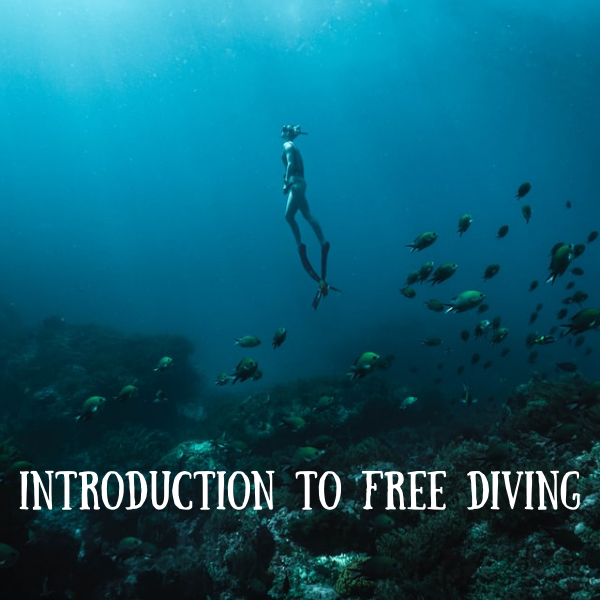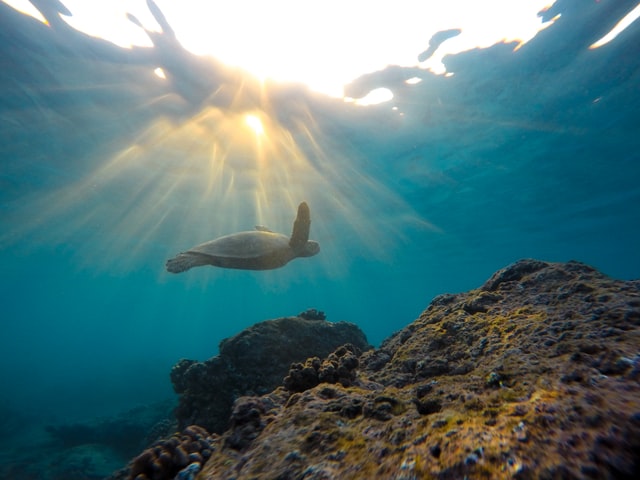Introduction to Free Diving

The Beauty of the Ocean: Without the Scuba Gear!
Free Diving is one of the most natural sporting pursuits you can engage in. It’s simply you and the elements as you head under the water, holding your breath as you explore or compete. For many, free diving is a sport. While for others, it offers an opportunity to increase fitness levels, experience adventure and find out more about yourself.
With Scuba diving, you are laden with equipment including your air tank, weights, and pipes. Free diving dispenses with all this heavy gear. It is simply you, an optional pair of goggles and the beauty of the ocean.
This guide starts by explaining how free diving works – and its history. Next, training for this sport is examined, detailing the best ways to prepare for the activity. Free diving competitions take place around the world – with the best divers becoming stars in their community. This is covered at the end of the page.
What is Free Diving?
Free Diving (also known as breath-hold diving or skin diving) is an underwater pursuit that relies on holding your breath, as opposed to using equipment such as scuba diving gear.
In its simplest form, any time you head under water, if only for a second, you are free diving. However, the activity has taken on much greater significance with the formation of sporting events around it, and moments of great adventure.
Early Origins Turn to International Sporting Events
People have been free diving for centuries, with the early divers using the technique for food, especially spear fishing. Modern free diving began in 1913, when Greek Sponge diver Stotti Georghios dived to locate the missing anchor of the Regina Margherita (the pride of the Italian navy). He was underwater for three minutes and after retrieving the anchor was awarded £5 and the permission to fish with dynamite for the rest of his life.
Today, free diving has evolved into a fully-fledged sport. It features in international competitions and world records. The beauty of skin diving is that literally anyone can take it up – a low-cost activity with no expensive fitness equipment required.

Introduction to Free Diving: Safety and Training
Taking a course hosted by a professional is recommended for all sports. With free diving, this is vital.
There are obvious dangers to the pursuit, so simply heading out to a spot in the sea and then aiming to hold your breath for as long as possible is not the right approach. A trainer will go through safety, breathing techniques, and risk assessment. If you go into the water without training you are opening yourself up to ear, sinus, and lung problems. If you dive deep enough, blacking out and decompression sickness become hazards.
Much of the training based around holding your breath and staying in control while doing so. The best way to do this at first is in a pool. As you head under water and hold your breath, aim to relax. If you think about holding your breath, a signal is sent to your brain making you want to breathe.
If you can relax and concentrate on something else other than your breath, it will stand you in good stead and enable you to steadily increase the time underwater. When practising, it can be an idea to use a 1:2 ratio. If you spend a minute under the water, come up for 2 minutes or more, before heading underwater again.
Many beginner divers will use a snorkel, which can aid in getting the air in a relaxed position and adapting yourself to breathing with your mouth and not your nose.
Competitions and Famous Athletes
Much of the sporting side of free diving comes under the heading of ‘Competitive Apnea’ (‘Apnea’ is the cessation of breathing). There are many different forms of this, including the following:
- Constant Weight Apnea: Measured by depth reached, the competitor is able to use a guide line.
- Dynamic Apnea: The maximum horizontal distance achieved while underwater at all times.
- Static Apnea: Usually taking place in a pool, this activity is a breath hold competition, where the competitor sits or stands underwater.
In some of the events, fins are permitted, which can help with distances and speeds.

Famous Free Divers
- Stéphane Mifsud: This French athlete holds the world record for Static Apnea, staying underwater for 11 minutes and 35 seconds. He is the five times world champion this area.
- Natalia Molchanova: The women’s world record holder, staying underwater for 9 minutes and 2 seconds. Sadly, In 2015, Molchanova went missing while training free diving, when she went for a dive on her own and didn’t return.
- Herbert Nitsch: Nitsch is an Austrian free diver who holds world records in eight different free diving disciplines. Known as the ‘deepest man on earth’ having reached a depth of 214 metres while free diving.
More Introductions to Entertaining Sports: